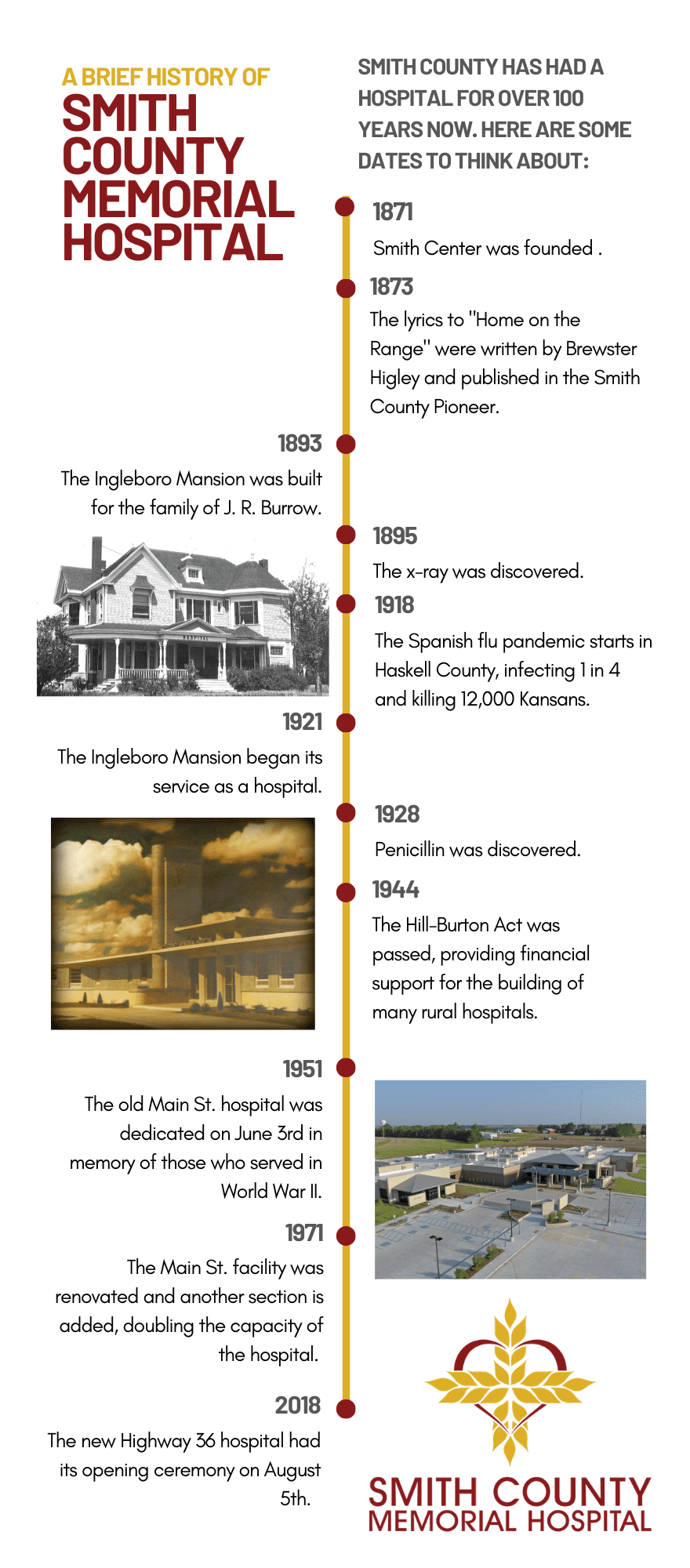History

As it provides accessible medical care to the roughly thirty miles that make up Smith County, Smith County Memorial Hospital has been a staple in the area for nearly 70 years.
Before its founding in 1951, medical care was provided at the Ingleboro Mansion.
This large Victorian house, built in 1893 for the family of J. R. Burrow, was dubbed “Ingleboro” as a combination of the household surnames Ingalls and Burrow. The Ingleboro was the first building in Smith Center with a steam heating system.
When Burrow was elected Kansas secretary of state and moved to Topeka, the building was sold and eventually bought by Dr. C.C. Funk, who converted the building to a hospital in 1921.
After the old hospital was built, the Ingleboro Mansion was used as a nursing home. It still stands today as a bed and breakfast on 319 N Main St.
After thirty years of medical care being provided at the Ingleboro Mansion, the community saw a need for an improved venue to provide healthcare services in the county. A location south of town was chosen and built using a mixture of federal funding, tax dollars and charitable contributions. The modern facility was dedicated on June 3, 1951.
Despite being partially remodeled in the early 70s, as needs changed over the more than sixty years that the hospital was in service, the county residents felt that it was time for an upgrade. A new location along Highway 36 was chosen and the hospital moved in August 5, 2018.
So why the Smith County “Memorial” Hospital?
A bond election to build the Main St. hospital was held in early 1946, not long after the end of World War II, and was met with resounding approval by the community.
In addition to taxes, there was a significant voluntary contribution by the community, as donations alone reached $11,328 (about $150,000 in 2021 dollars).
To thank the community for this support and to honor the community members who had been lost in the war, the American Legion and the Veterans of Foreign Wars (VFW) of Smith County dedicated the old hospital building on June 3, 1951.
A plaque stands outside the new facility listing the names of those Smith County WWII veterans and has been expanded over the years to include fallen Korean and Vietnam War veterans as well.
